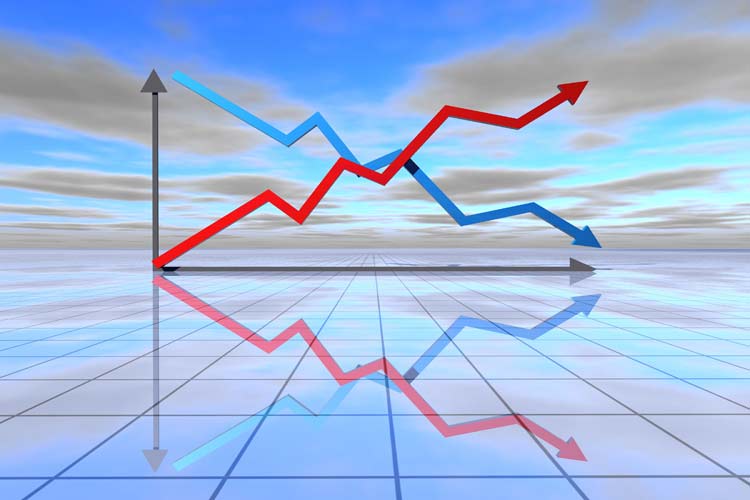
What happens to the Dow and individual stocks after prolonged winning and losing streaks?
Last Thursday, the Dow fell 0.4%, which ended a nine-day winning streak. Going all the way back to 1900, it was only the 32nd time the Dow saw a winning streak that long. Additionally, on Monday, General Motors Company (NYSE:GM) fell 0.3%, ending a winning streak that began on July 6 and lasted nearly three weeks (it totaled 13 trading days). This naturally made me curious if anything could be deduced from these winning streaks. Do winning streaks tend to end with sharp down moves? Does underperformance tend to occur after lengthy winning streaks (or vice-versa for losing streaks)? This week, I'll take a look at how the Dow has performed after these winning streaks. Then, I'll take a look at how stocks behave, depending on whether they've seen either winning streaks or losing streaks.
Dow Winning Streaks: I mentioned the 32 Dow nine-day winning streaks going back to 1900. Below, I summarize the Dow returns after nine straight positive days, and then I show typical Dow returns for comparison. I noticed the odds of a positive day after nine straight up days fell to about 47%, compared to 53% anytime. However, the average return for that day is significantly higher (0.12% vs. 0.03%). Looking at average return and percent positive past that first day, it seems the market tends to be pretty strong over the next couple of weeks. Once you get out to one month after the streak ends, the average return and percent positive are back to normal levels.
Also notable, but probably not surprising, is the standard deviation of returns after these streaks is considerably lower than usual. I say it's not surprising because winning streaks like this typically occur during calm trading environments, so low volatility would seem likely.

Streaks & Individual Stocks: Earlier, I had mentioned how GM had a 13-day winning streak. Streaks like that are bound to come to an end. I wondered if the chances of a down day increase as such lengthy streaks stretch longer and longer. To figure this out, I looked over the past five years, and found next-day stock returns for stocks in the S&P 500 Index (SPX), depending on their winning streak or losing streak.
To read this chart, note that where the x-axis is negative, it means it's a losing streak. So, reading the chart from left to right shows longer losing streaks to longer winning streaks. Also, note that where the winning streak or losing streak is 11, it actually shows results for 11 or more. Once you get up that high, the number of returns falls below 100 and data becomes very sporadic. The shaded area is the average across all stocks on any day.
Now that we know how to read the chart, let's look at the average return for the next day and the percent positive. I see evidence that, as a stock loses day after day, the chance of a positive day increases, and as a stock increases day after day, the chance of another winning day decreases. The percentage of positive days (orange line) is right around the average level after one losing day to about four straight losing days. After just one day of gains, the chance of a positive day drops to just above 50%. After four straight days of gains, the chance goes below 50% and chops back forth around that level as the winning streak increases. Meanwhile, the percentage of positive days is above the average level after it sees anywhere from five to nine losing days in a row. Interestingly, once it gets to 10 days, the chance falls. I would consider this an anomaly, or maybe traders bet on an increase up until two weeks of losses (10 trading days), which becomes a popular spot for them to capitulate and sell. The average return (blue line) moves similarly to the percent positive.
According to this chart the "sweet spot" to buy a stock for a one-day return is after it falls six to eight trading days in a row. That's where the average return and percent positive top out.

In the table for the Dow, I pointed out the standard deviation of returns were lower after winning streaks. Is it the same for individual stocks? The data below is pretty clear that it is. The first chart shows the average gain and the average loss, depending on the winning streak or losing streak of the stock. Generally speaking, the longer the losing streak, the bigger the stock move you can expect. After big losing streaks, you can expect a gain or loss close to 1.5%. As you move to the right of the chart, the lines move closer and closer together. Once the winning streak reaches six days, the average gain and average loss are less than 1%.

Here is one more chart to make the point about volatility. It's the standard deviation of the next-day returns, based on the losing streak or winning streak. The standard deviation itself is pretty unstable during long losing streaks. Moving to the right of the chart (as the losing streak decreases and winning streak increases), the standard deviation of returns steadily decreases.

Sign up now for a trial subscription of Schaeffer's Expiration Week Countdown! We'll send you 5 trades for expiration week, each targeting double- or triple-your-money gains in less than 5 days.